Every year, the consumer electronics market has its own buzzword. This year, it's undoubtedly "3D TV" -- and it's pretty darn cool. But it's also a bit confusing. Do you still need glasses? Yes. Will the new 3D TVs work with regular TV shows? Yes. Is there any 3D content? Yes and no. We'll explain what all the fuss is about, let you know what features matter and give you a guide to what's available today in the 3D HDTV market.
Not Your Great Grandfather's 3D
3D has actually been around in film since the 1800s, when it was better known as Stereoscopy. Over 100 years later, we've simplified the name to 2 characters (3D) and also improved the methods for delivering it. At the end of that rainbow of colored paper glasses, we have 2010: The year that high-quality full high definition 3D TV finally arrives in consumers' homes.
Before you start firing off angry emails or forum posts, yes -- we know 3D has been a reason to fire up the Jiffy Pop for quite some time now. Back in the late '70s, we distinctly remember getting a pair of 3D glasses at Burger King for a UHF broadcast of Creature Double Feature in 3D. Flash forward to 2009, when Dreamworks helped SoBe Lifewater standout amongst Super Bowl commercials by adding a little 3D. Even NBC dished out a supersize promotion for a very special, very in-your-face episode of the spy dramedy Chuck. More recently, studios have been attaching a 3D component to Blu-ray releases. Just over the past few months, we've checked out Coraline, The Final Destination and even the Jonas Brothers.
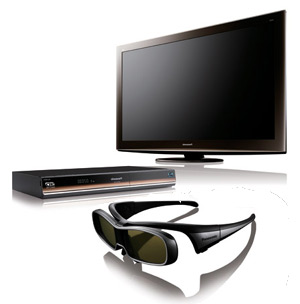
Many TV broadcasts, DVD and Blu-ray releases have used this format, simply because there were no other options. And if you haven't noticed, it's not very effective. Colors tend to be inaccurate and images are generally fuzzy. Basically, the 3D effect is hit or miss and prolonged use can lead to headaches.
Must-See 3D
Headaches, you say? Sign us up! While that and two or more hours wearing 3D glasses might not sound too enticing, there is one important thing to know: The technology has gotten a lot better.
Manufacturers have created a new wave of Full HD 1080p HDTV sets, which can also produce 3D images. Those models use alternate frame sequencing technology with active shutter glasses to produce 3D effects from both movies and TV broadcasts.
However, few 3D TVs actually do 3D out of the box. That's because many require 3D glasses or other add-ons. If you don't have your heart on a specific manufacturer, you might be able to score some of those tidbits with the purchase price of your 3D TV. Samsung, Sony and Panasonic are all well-known for packaging 3D TVs with a 3D starter kit. This typically retails for $399, and includes two pairs of 3D glasses, as well as Blu-ray 3D titles. Many of these are exclusive to the manufacturer. For instance, if you must have Avatar, plan to buy from Panasonic. They have that movie as part of their starter kit, which also includes a free Blu-ray 3D player. Deals and details vary. Make sure to shop around or keep a close watch on our running list of home theater deals. You just might get a complete 3D setup with one purchase price.
It's just good sense, too. Because as much as we love the idea of a great big new 3D-enabled HDTV, there is little content available today to support new at-home 3D technology. Even after a year of waiting and watching release dates, there are still very few Blu-ray 3D titles available for general release. (Don't worry; more are coming in 2011 too.)
It may be easy to scoff, but these releases look much different than what we've seen to date, except perhaps in theaters. In late 2009, the Blu-ray Disc Association announced a final specification for Blu-ray 3D. That spec allows every 3D-enabled Blu-ray player (including the PlayStation 3, with an upcoming firmware upgrade) to deliver full HD 1080p video images to each eye, regardless of your display type -- as long as the display itself also supports 3D. However, just because everyone has agreed on one spec doesn't mean all displays play nice together. In other words, Samsung glasses will work with Samsung displays, not your friend's Panasonic plasma. [editor's note: See XPand's recent announcement on their plans for universal 3D glasses that work with all manufacturers' 3D TV displays].
Other content is available through ESPN3D and n3D, which is DIRECTV's joint venture with Panasonic. The Discovery Channel, Sony and Imax are collaborating on a 3D HD channel to go live in the near future. It may take some time, but eventually there will be a rich offering of 3D content to display on your new 3D TV.
For now, however, these 3D-enabled models also happen to make excellent 2D TVs. The high frame rates and faster panel response rates of the new Full HD 3D LED TVs from Samsung as well as Panasonic's new short stroke plasma phosphors in their Full HD plasma models make these TVs among the best on the market for watching traditional 2D content. Also, Samsung offers a real-time 2D-to-3D conversion feature for adding a 3D effect to traditional 2D shows and movies. It's not as good (nor as dramatic) as watching real 3D content, but it will give you something to watch while you're waiting.
Getting a headache yet? We shall soon see. Although we don't expect everyone to run out an upgrade to a 3DTV, those willing to make the leap certainly have plenty of models to choose from. Here is what TV manufacturers currently offer for 3D enthusiasts. [Note: The information below was last updated in December 2010.]
LG
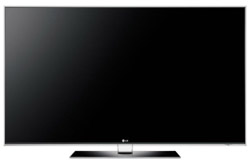
Similar to the 9500s, the LX6500 Series includes 3D and NetCast features. However, the 6500 models have a 8,000,000:1 dynamic contrast ratio and a 240Hz refresh rate. Also, these models do not include THX certification or the Magic Wand remote.
LG also unleashed one 3D-enabled plasma, the PX950. As part of the INFINIA Series, this model includes a 1080p image, THX certification, a Picture Wizard, and the Magic Wand remote control. It also comes with the adapter that will make this HDTV wireless. That should come in handy, too, since this HDTV includes access to NetCast content.
Mitsubishi
According to Mitsubishi, the company has actually been cranking out 3DTVs since 2007. Many of those older models require a 3D adapter to view today's 3D sources. However, in November, Mitsubishi announced a software update that would allow all 738 and 838 series Mitsubishi 3D-ready TVs to support 3D signals via HDMI 1.4a.
One of the models to receive the upgrade is the massive 82-inch WD-82837. Boasting nearly four times the screen size of a 42-inch flat-panel, this is the largest mass-produced 3DTV to date. The 1080p DLP unit also boasts plenty of features for that mammoth set. Just a few include Mitsubishi's 6-color processor, Smooth 120Hz Film Motion technology, PerfectColor, and four HDMI inputs. It also features the ISF's ccc Advanced Calibration Mode, as well as NetCommand, which combines both older and newer A/V products under one controller.
In case you aren't ready to have 3D take over your life (or living room), the 837 series also comes in 65- and 73-inch sizes.
In April 2010, Mitsubishi added seven new 3D TVs for 2010, which span across three new series. Aside from Brilliant/Bright/Natural and Game Modes, HDMI-PC compatibility, and MDEA's exclusive 6-Color Processor, each unit blasts 16-speaker 5.1-channel Dolby Digital surround sound. All those are standard on the 638 series, which also includes three HDMI connections (with CEC).
The 738 series has all the above, with StreamTV Internet Media and Immersive Sound Technology. StreamTV's service includes content from VUDU, Pandora, Flickr, Picasa, Facebook, and more. Other 738 perks include a USB jack for 802.11 support, Smooth120 technology, video calibration features, and a universal remote.
The 838 Diamond series has all of the above, as well as Bluetooth A2DP audio streaming, a Center Channel mode, surround channel outputs, a subwoofer output, ISFccc video adjustments, NetCommand, and a wired IR input. These three units also add one extra HDMI jack.
Mitsubishi made its most recent 3D TV announcement in June, when they debuted the L75-A91. This 75-inch entry into the LaserVue line features 3D features, as well as the LaserVue/DLP light engine, and four HDMI-CEC inputs. Brand new features include a Cinema Color mode and StreamTV, which adds on-screen access to services such as VUDU, Flickr, Facebook, and others.
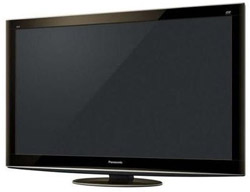
Earlier this year at CES, Panasonic was showing off a 152-inch 3D plasma. It also made an appearance at the Olympics. Don't start moving out the couch just yet, though. The company hasn't said they will actually start selling these (tease!). However, they have launched plenty of 3D plasmas this year.
The GT25 Series has a total of two models. Both feature a 1080p image, as well as THX display certification and 600Hz Sub-field Drive technology. Like many Panny sets, both of these have VIERA Image Viewer and VIERA Link. Neither unit has wireless features out of the box; you'll need to plug an optional adapter into the set's USB port. You'll want that connection, though, since each unit packs in VIERA CAST. This delivers internet-based content (currently 2D) from Amazon Video on Demand, Bloomberg News, Fox Sports, Netflix, Pandora, and Skype, among others.
Also announced earlier this year, the TC-P50VT20 and TC-P50VT25 each run 50 inches, with the TC-P54VT25 coming in at 54, and the TC-P58VT25 is the 58-incher. The flagship, however, is the TC-P65VT25 65-inch model. Each set comes with one pair of Panasonic active shutter 3D Eyewear to get your eyes popping right out of the box.
The company also boasts faster plasma phosphors, a 600Hz sub-field drive, and VIERA Link support (HDMI-CEC). Of course, these sets also feature VIERA CAST content.
Panasonic's biggest bit of 3D came in December 2010, when the company announced the long-awaited availability of Avatar on Blu-ray 3D. This 3D title is currently part of Panasonic's 3D Ultimate Pack, which comes with the movie, as well as two pairs of 3D glasses. New buyers will receive this package, as well as the DMP-BDT100 Blu-ray 3D Player. (Read our review on the DMP-BDT100). If you've already purchased a Panasonic 3D TV, the company is offering a free copy of the movie via a mail-in rebate. Check out Panasonic's Avatar Blu-ray Promo page for more details.
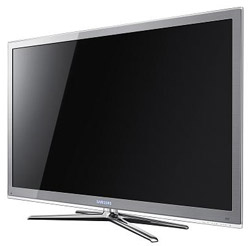
Samsung came into March came like a lion, announcing a huge assortment of 3DTV models and supporting gear in various shapes and display types. When the smoke cleared, we got info on three lines of Full HD LED TVs, six plasmas, and one LCD line -- all of which are compatible with 3D content including Blu-ray 3D.
The one common element each of the sets has is Samsung's Internet@TV service including Internet apps. This on-screen web-based service provides instant access to content from Netflix, Pandora, Twitter, VUDU, and other partners.
Ranging from 40 to 65 inches, the LED models all fall under the C7000, C8000 and C9000 Series. Each one features wireless connectivity via Allshare, a Real240Hz refresh rate and a built-in 3D processor, which can also render 2D content into 3D in real time. Distinguishing features include Precision Dimming technology for the C8000 (a variation of local dimming for edge-lit LED/LCD models), and Samsung's Touch of Color frame for select models. Also, the C9000 Series will come packing a 3-inch color touchscreen remote, which includes a QWERTY keyboard, earphone jack and Twin View for watching TV or a Blu-ray DVD titles on the remote or TV at the same time. No more missing that key play when you take a much needed bathroom break during the big game! The other models can have the remote for another $350, but without the Twin View features.
For plasma fans, six of the eight models in the C8000 and C7000 Plasma Series will sport 3D features. The 7000 series models feature Clear Image Panel technology, and a built-in 3D processor that can convert 2D content to 3D in real time. In addition to these features, the 8000 series boasts Real Black Filter and Motion Judder Canceller, as well as CinemaSmooth technology for enhanced film playback and the Touch of Color bezel design. Last, but not least, the 750 Series will be Samsung's only 3D LCD offering -- at least for now. Sporting Real 240Hz technology, this 46-inch unit will also convert 2D to 3D in real time (just like its LED and plasma brethren).
If you're looking for something a bit more affordable, you'd probably never consider a 3D plasma. However, Samsung is changing that with the PN50C490. The unit ditches the IPTV features, but does offer 3D and a 1366x768 resolution package that can be had for under $1000.
Samsung 3D LCD TV:
Samsung 3D LED TVs:
Samsung 3D Plasma TVs:
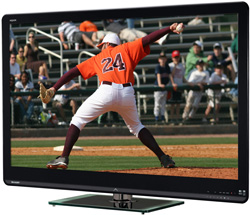
Sharp took their sweet time bringing 3D TVs to market. Announced in September, the LE925 Series provides 3D TV right out of the box. That's because each of the two models in the series comes packing two pairs of 3D glasses. Those glasses actually have a neat feature, which allows the viewer to flip between 2D and 3D via a button on the glasses.
Now, on to the actual HDTVs. Each one features Sharp's new quad-pixel Quattron technology as well as the X-Gen LCD panel, Frame Rate Enhanced Driving with the AquoMotion 240 driving circuit, and LED backlight side-mount scanning. Other features include three Spacious Sound 3D modes, IP control, and four HDMI ports. These sets also come packing an adapter so that you can hook the TV up to your home's wireless network. As with other manufactures, this is a huge bonus, because the TVs also feature AQUOS Net. This is Sharp's own on-screen service, which includes content from Netflix and VUDU.
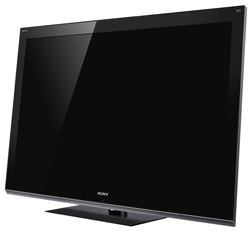
Boasting a Monolithic Design Concept and LED backlighting, Sony is putting its 3D HDTVs under the BRAVIA line. The LX900 series offers 3D out of the box, via Sony's own active shutter glasses and a built-in 3D transmitter. The LX900's four models feature a 1080p image, built-in- Wi-Fi, Motionflow PRO 240Hz technology, and Sony's new OptiContrast panel, which cuts down on distracting light in and around the room. Another super-cool feature is Intelligent Presence Sensor, which actually detects if your bathroom break has gone on a little too long, automatically dimming the backlight. If you don't come back, it will shut down after a short period.
The HX909 and HX800 series are all 3D-capable, but you'll need to buy the glasses and transmitter separately. All three series do 1080p,with Motionflow PRO 240Hz technology, LED backlighting and a USB Wireless-LAN adapter (sold separately). Other features for all include DLNA support, BRAVIA Internet Widgets and BRAVIA Internet video content.
The NX810 Series has a similar set of features, but adds in built-in Wi-Fi. That means that no adapter is necessary.
Sony HX800 3D Series:
Sony NX810 Series:
Sony LX900 3D Series:
Sony HX909 3D Series:
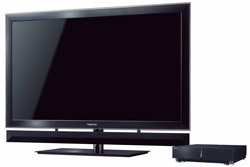
Earlier this year, Toshiba announced its ZX900 CELL TV will come in 55- and 65-inch sizes. The heart of the unit is the CELL Broadband Engine, which promises the same type of processing that's used in PCs and gaming consoles. Using a Frame Sequential System, the system delivers 240Hz in 2D mode and 120Hz for the right eye and 120Hz for the left eye in 3D mode. It also boasts TriVector 2D to 3D Conversion, which promises to pump any 2D content up to 3D, all in real time.
Other features include a 1080p image, KIRA2 dimming technology, and Net Resolution+, which helps compress some of that Internet noise. Also, KIRA2 technology features dimming possibilities for 512 controllable zones. Also, a 1TB hard drive and built-in Wi-Fi support is a nice perk if you are playing around with Toshiba's partners, which include Netflix, VUDU, CinemaNow, Pandora, and more.
Currently, there's no additional info on when CELL TV will reach the masses. In the meantime, Toshiba did introduce the WX800 Series. Using Toshiba's optional 3D glasses, these models can deliver 3D. Both sizes use LED backlighting and boast a 1080p image, a 240Hz refresh rate, and a 7,000,000:1 contrast ratio. Other features include the PixelPure 5G processor, built-in Wi-Fi support, and Net TV content.
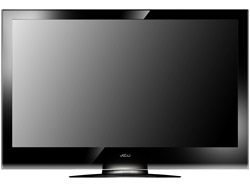
VIZIO is no longer the bargain brand. OK -- they still offer some great sets at great prices, which makes us anxious to see what the XVT Pro Series will sell for. This is the company's entry into 3D, and it will come in 47-, 55-, and 72-inch sizes.
All three models include SENSIO 3D and 480Hz SPS Smooth Motion technologies, built-in Wi-Fi, SRS StudioSound HD audio, and Smart Dimming circuitry to control hundreds of zones of LEDs. Also, each set will provide additional content through VIZIO Internet Apps (VIA), as well as a Bluetooth remote with sliding QWERTY keyboard. Another nifty feature is Wireless HDMI, which uses an adapter and receiver to eliminate the need for HDMI cables for up to four sources.
In June, VIZIO announced three new 3D TVs: the 55-inch XVT3D554SV, the 47-inch XVT3D474SV, and the 42-inch XVT3D424SV. All three include full HD 3D. The big difference is that the 42-incher features Razor LED backlighting with Smart Dimming, while the other two are part of the TruLED with Smart Dimming series. The trio also features 480Hz SPS high frame rate with Smooth Motion technology, with the 47- and 55-inch models throwing in integrated 802.11n WiFi, as well as an integrated WirelessHD receiver.
Now Add a 3D-Compatible Blu-ray Player!
Also Check Out These Related Articles: